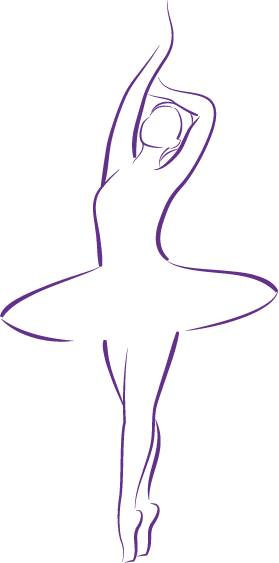
Ballet

Classical Ballet
This classical style dates back to the 17th century, characterised by grace and precision of movement. This traditional dance form and its techniques are the foundational influence for all other dance styles. Known for its rigorous technique and beautifully elegant aesthetics, classical ballet focuses on emotive narratives through its dramatic visuals and complex choreography.
The strength, artistry and fluidity of Ballerinas are what forms this highly formalised theatrical art, classical ballet has a strict adherence to correct form to ensure the technical aspects such as pointe work, turnout of the legs and high extensions are all performed with absolute precision.
Famous examples of classical ballet include Swan Lake and The Nutcracker. The first versions of Swan Lake in 1877 were not very well received, however, the performance to Tchaikovsky’s symphonic-style score has since grown in popularity.
Neoclassical Ballet
Neoclassical ballet is the revival of the classic style, first emerging in the 1920s it continued to evolve throughout the 20th century, moving away from the overly dramatic and romanticised narratives that were common in classic ballet.
This form of ballet demonstrates a bolder, more assertive style while still maintaining many of the key techniques of classical ballet such as pointe technique.
The history of the Neoclassical ballet comes from the choreographer George Balanchine who, had the privilege of collaborating with Picasso, Matisse, Chanel, etc. to create neoclassicalism as it is known today.
The hallmark of neoclassical is the removal of more traditional tutus and props for clean sets and plain leotards thus enabling the dancer’s movement to be the main artistic medium on stage.


Neoclassical Ballet
Neoclassical ballet is the revival of the classic style, first emerging in the 1920s it continued to evolve throughout the 20th century, moving away from the overly dramatic and romanticised narratives that were common in classic ballet.
This form of ballet demonstrates a bolder, more assertive style while still maintaining many of the key techniques of classical ballet such as pointe technique.
The history of the Neoclassical ballet comes from the choreographer George Balanchine who, had the privilege of collaborating with Picasso, Matisse, Chanel, etc. to create neoclassicalism as it is known today.
The hallmark of neoclassical is the removal of more traditional tutus and props for clean sets and plain leotards thus enabling the dancer’s movement to be the main artistic medium on stage.
Contemporary Ballet
Contemporary ballet incorporates elements of both classical ballet and modern dance, still applying pointe technique whilst allowing greater freedom of movement. There is less restriction of upper body movement and of the defined body lines as found in classical ballet focusing on the emphasis of the body’s flexibility.
This style goes against the traditional rules of composition, giving dancers chance to explore and experiment with their movements and in particular, for female dancers, to demonstrate strength and power and their male counterparts to show more tender moments.
Contemporary ballet certainly gives opportunity for a more abstract and expressive performance, still incorporating classical techniques but with a more modern interpretation.

Contemporary Ballet
Contemporary ballet incorporates elements of both classical ballet and modern dance, still applying pointe technique whilst allowing greater freedom of movement. There is less restriction of upper body movement and of the defined body lines as found in classical ballet focusing on the emphasis of the body’s flexibility.
This style goes against the traditional rules of composition, giving dancers chance to explore and experiment with their movements and in particular, for female dancers, to demonstrate strength and power and their male counterparts to show more tender moments.
Contemporary ballet certainly gives opportunity for a more abstract and expressive performance, still incorporating classical techniques but with a more modern interpretation.
Testimonials
Contact Us
We'd love to hear from you








